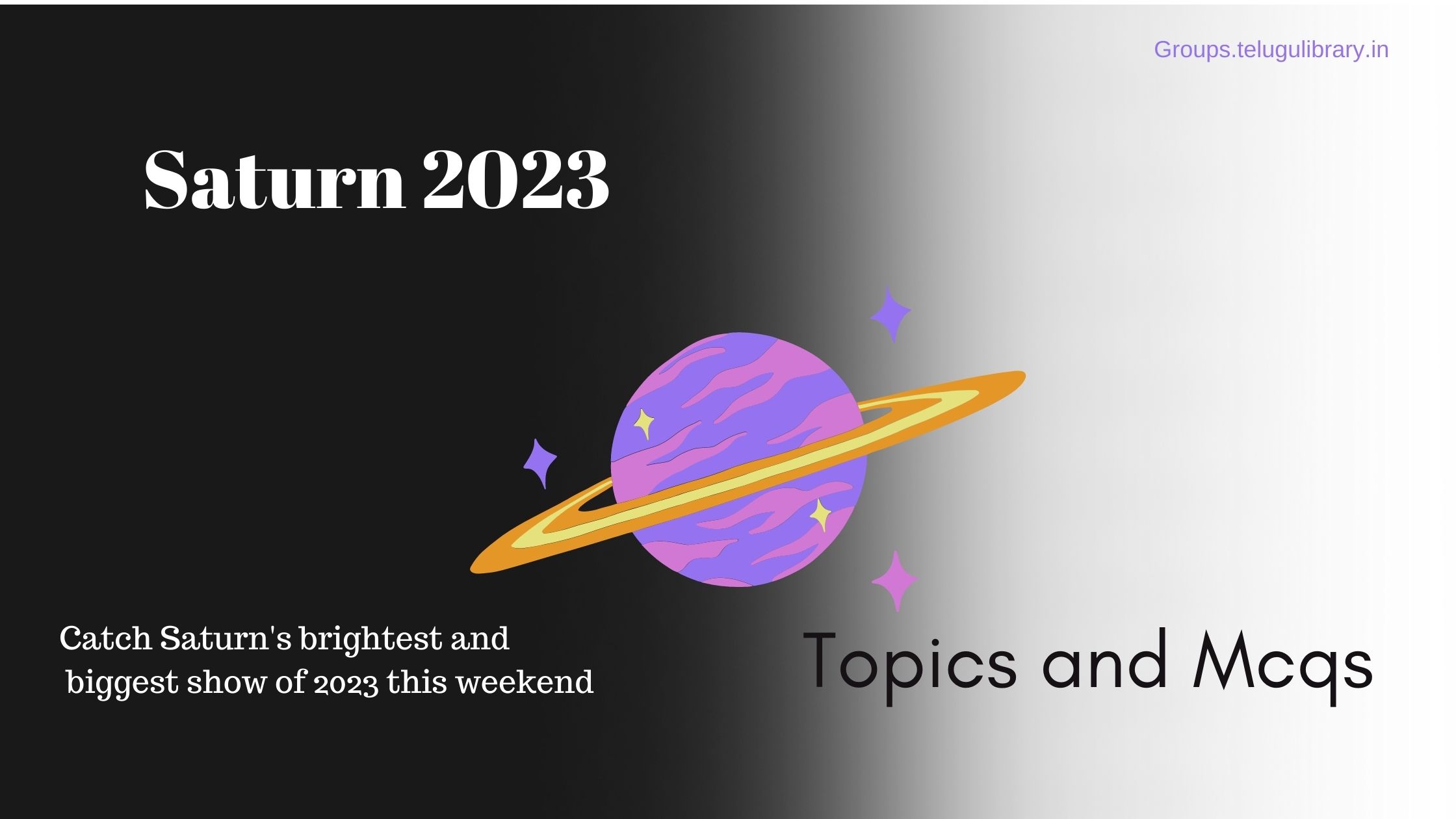Saturn’s 2023 Big Show: Sunday night (Aug 27) as the stage for Saturn’s grand performance. Around 4:20 am EDT (1:50 pm IST), Saturn will shine super bright, like a cosmic superstar, visible without a telescope. It’s like a glowing friend in the sky, saying hello to all of us! From Saturn planet
Saturn planet Details:
Giant Ringed Planet: Saturn is often called the “Jewel of the Solar System” because it’s known for its stunning system of rings. These rings are made up of ice particles, rocks, and dust, and they can be seen from Earth with a small telescope.
Second Largest Planet: Saturn is the second-largest planet in our solar system, after Jupiter. It’s so big that you could fit more than 760 Earths inside it!
Saturn’s Feather-Light Secret: Imagine a giant that’s lighter than air! Saturn’s huge but surprisingly light due to its low density.. If you had a gigantic bathtub, Saturn would float in it because it’s less dense than water.
Rapid Rotation: Saturn is a fast spinner. It takes only about 10 hours and 33 minutes for Saturn to complete one full rotation on its axis. This rapid rotation causes its shape to be slightly flattened at the poles and bulging at the equator.
Many Moons: Saturn has more than 80 moons that we know of, and some of them are quite unique. One of its moons, Enceladus, has geysers that shoot icy particles into space, creating a sort of icy “fountain.”
Saturn planet…
Titan’s Atmosphere: One of Saturn’s moons, Titan, has a thick atmosphere. It’s the only moon in the solar system with a significant atmosphere, and it’s even thicker than Earth’s! The atmosphere is mostly composed of nitrogen, similar to Earth’s, but with some unique organic molecules.
Hexagon on Saturn’s North Pole: Saturn’s north pole has a hexagonal-shaped pattern of clouds that scientists still don’t fully understand. This mysterious hexagon is larger than Earth and has been captured by spacecraft like the Cassini probe.
No Solid Surface: Unlike Earth, Saturn doesn’t have a solid surface like land or rock. It’s mostly made up of gases like hydrogen and helium. If you could find a way to stand on the surface of Saturn, you would gradually sink into the planet’s atmosphere.
Spacecraft Exploration: The Cassini-Huygens mission, a joint effort by NASA and the European Space Agency (ESA), provided us with a wealth of information about Saturn and its moons. It orbited Saturn for over a decade, sending back incredible images and data.
Cold Temperatures: Saturn is incredibly cold. Its average temperature is around -178 degrees Celsius (-288 degrees Fahrenheit). The distance from the Sun and its low density contribute to these frigid temperatures.
Saturn planet visible in august 2023 time in india:
- Sunday Night Delight: Keep your eyes on the sky on Sunday (Aug 27) evening.
- Cosmic Performance: At around 4:20 am EDT (1:50 pm IST), Saturn takes center stage.
Saturn planet …
exam questions and answers onSaturn planet :
- Question: What is Saturn known for? Answer: Rings.
- Question: How many moons does Saturn have? Answer: Over 80.
- Question: Is Saturn a gas giant? Answer: Yes.
- Question: How does Saturn’s size compare to Earth’s? Answer: Much larger.
- Question: What is the color of Saturn? Answer: Pale yellow.
- Question: How long does it take Saturn to complete one rotation? Answer: About 10.5 hours.
- Question: What gives Saturn its unique shape? Answer: Rapid rotation.
- Question: Are there any solid surfaces on Saturn? Answer: No.
- Question: What is the origin of Saturn’s rings? Answer: Debris and ice particles.
More…
- Question: What is Saturn’s position in the solar system? Answer: Sixth planet.
- Question: How cold is Saturn? Answer: Extremely cold.
- Question: What was the name of the mission that explored Saturn? Answer: Cassini.
- Question: Does Saturn have a hexagon? Answer: Yes, on its North Pole.
- Question: Why is Saturn less dense than Earth? Answer: Mostly composed of gases.
- Question: What’s unique about Saturn’s moon Titan? Answer: Thick atmosphere.
- Question: How does Saturn’s brightness change? Answer: Opposes bright, reaches magnitude 0.4.
- Question: Is Saturn’s hexagon still a mystery? Answer: Yes.
- Question: Is Saturn visible to the naked eye? Answer: Yes.
- Question: Does Saturn have distinct seasons? Answer: Yes, but less pronounced.
- Question: How was Saturn named? Answer: After the Roman god of agriculture.
G20 Summit 2023
